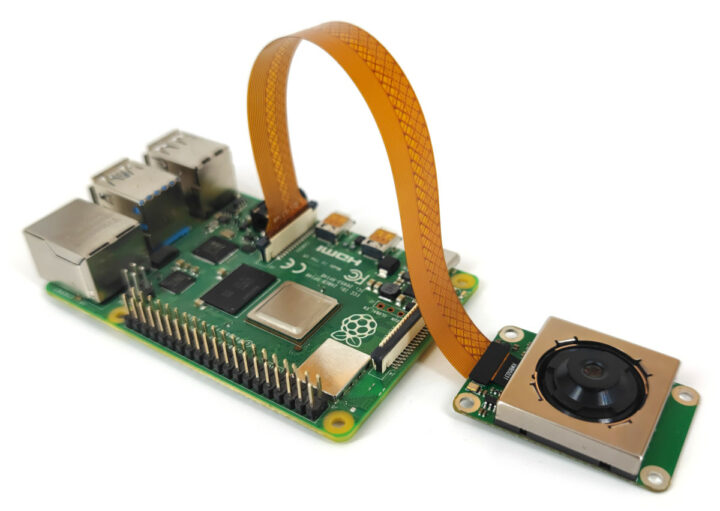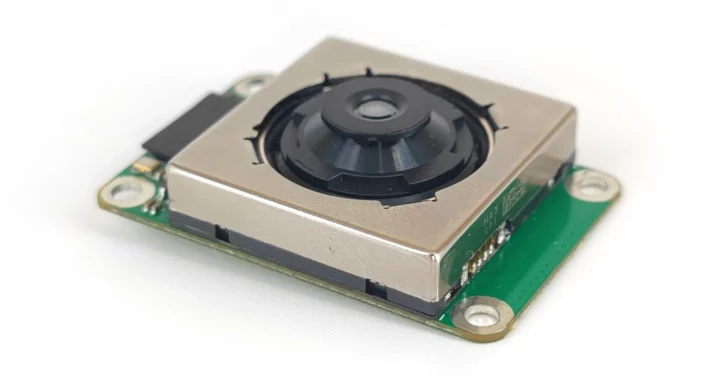RBTS.co’s C50M camera module is equipped with the same 8K 50MP Samsung ISOCELL GN2 image sensor found in the upcoming Google Pixel 8 Pro smartphone but targets the maker market with support for NVIDIA Jetson, Raspberry Pi, and Rockchip RK3588 boards.
With high-resolution and quick focusing ability, this camera sensor is designed for drones, machine vision, and industrial automation applications such as automated optical inspection and preventive maintenance, and the large 1.4μm pixels of the Samsung ISOCELL GN2 sensor are said to make the camera work well in low-light conditions.
C50M camera module specifications:
- Effective Resolution – 8,160 x 6,144 (50MP)
- Pixel Size – 1.4μm (2.8μm with 12.5MP binning)
- Optical Format – 1/1.12″ sensor
- Color Filter – Dual Tetrapixel RGB Bayer Pattern
- Frame Rate – 30fps @ 50MP, 120fps @ 4K and 480fps @ FHD
- ADC Accuracy – 10-bits
- Chroma – Tetra
- Auto Focus – Dual Pixel Pro (PDAF); range: 15cm to infinity
- WDR – Smart-ISO Pro (iDCG), Staggered HDR
- Output Formats – RAW8 (using DPCM/PCM compression) and RAW10
- HDR (stacking) output formats – RAW12 and RAW14
- Analog Gain – x16 @ 50MP, x64 @ 12.5MP
- Lens F-number – 1.82
- TLL – 8.3mm
- EFL – 6.811mm
- Field of View – 90°
- Host interface – 22-pin 0.5mm pitch FPC connector for 4-lane MIPI CSI-2 (6.5Gbps per lane), I2C, frame-sync output
- Supply Voltage – 3.3 – 5V
- Dimensions – 40 x 26 x 12 mm; mounting holes: 4x M2.5 holes in a 35 x 21 mm rectangle
- Weight – 12 grams
- Temperature Range – -20°C to +85°C
The C50 camera module is still in development with only 8 prototypes available at this stage. RBTS.co is still working on drivers for NVIDIA Jetson boards, the Raspberry Pi SBCs, and their own Rockchip RK3588-powered Machine Learning-focused platform for which there’s no detail at this time.
This may explain why they shared a video made by Samsung two years ago about the ISOCELL GN2 sensor instead of their own promotional video… Still, they have an aggressive development schedule with shipping in November 2023 to backers, or even in September 2023 for early backers.
The C50M 8K 50MP camera module has just launched on Indiegogo with a 33,500 Euros (about 36,650 USD) funding goal. Rewards start at 89 Euros for the early bird perk that includes the camera module, a 150mm 22 to 22-pin FFC cable, and a 150mm 22 to 15-pin FFC cable. The same kit goes for 119 Euros for backers who prefer to play it safer and get it shipped in November 2023 after some beta testing has taken place. Shipping adds an extra 15 Euros. Further details may also be found on the company’s website.

Jean-Luc started CNX Software in 2010 as a part-time endeavor, before quitting his job as a software engineering manager, and starting to write daily news, and reviews full time later in 2011.
Support CNX Software! Donate via cryptocurrencies, become a Patron on Patreon, or purchase goods on Amazon or Aliexpress






